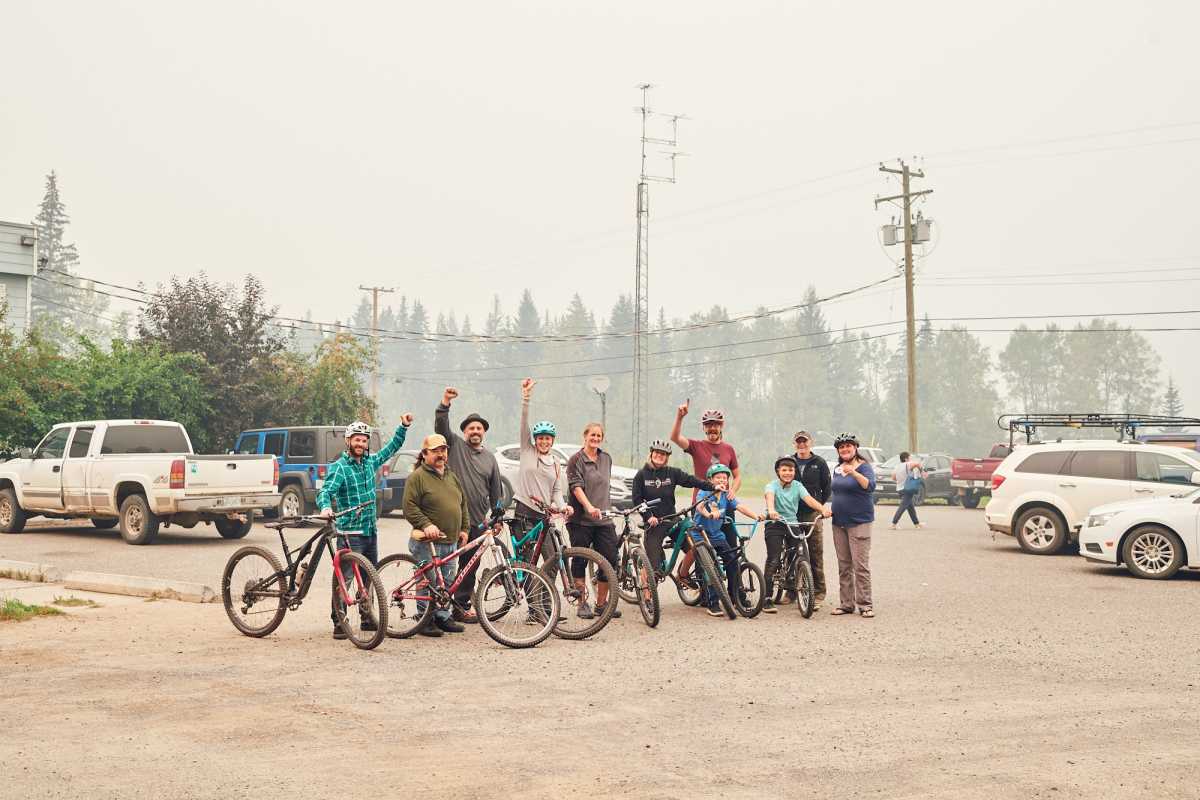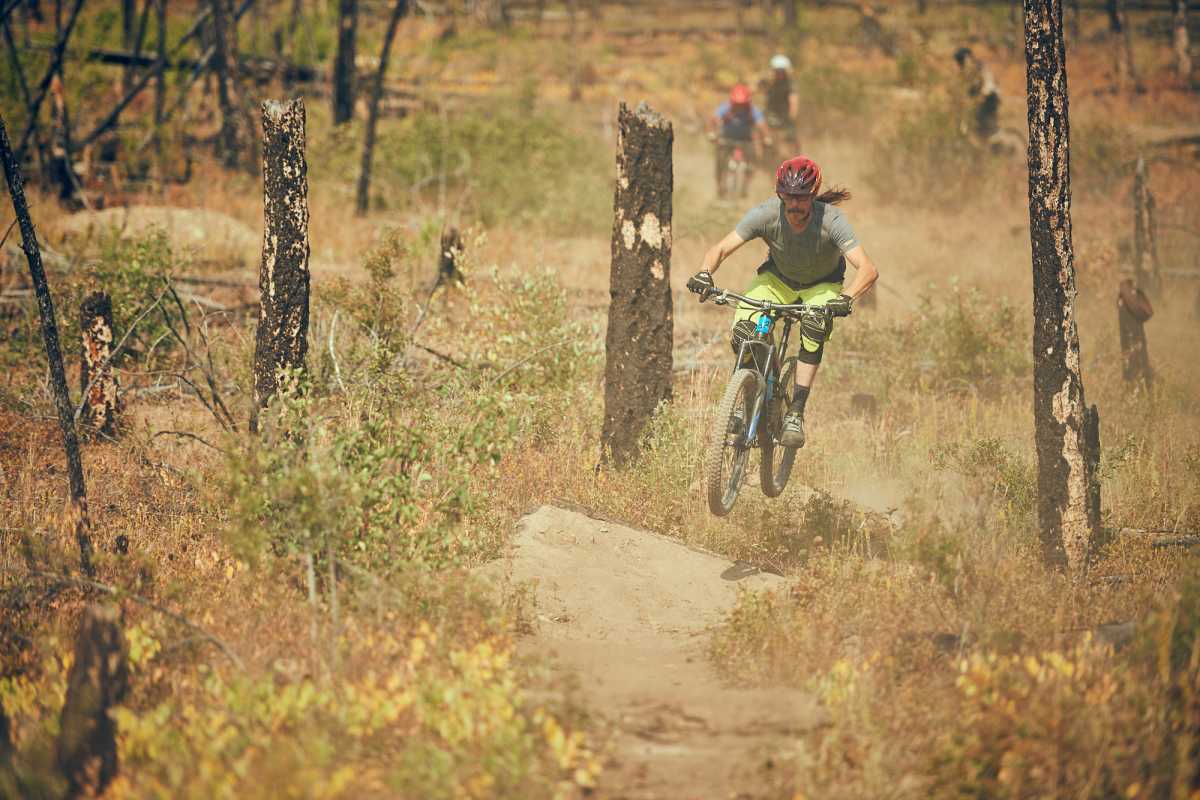Riding Through Ash & Renewal
Words by Patrick Lucas, photos by Paul Masukowitz .
The last two years have been tough on the psyche watching the clouds of smoke and ash build up across the province and in the air around us. With 2017 and now 2018 being the two worst years on record for wild fires, it is understandable to worry as to how our communities, and the trails we love to ride, can withstand the onslaught. In August, amongst the fires and towering clouds of smoke that ranged across the interior regions of BC and as far east as Manitoba, myself and my colleague and friend Thomas Schoen joined up with journalists and professional riders Julia Hoffman and Daniel Schaefer, and professional photographer Paul Masukowitz from German Bike Magazine. They had come to BC to travel and ride with Thomas and myself and to learn about our work through the Aboriginal Youth Mountain Bike Program and First Journey Trails.
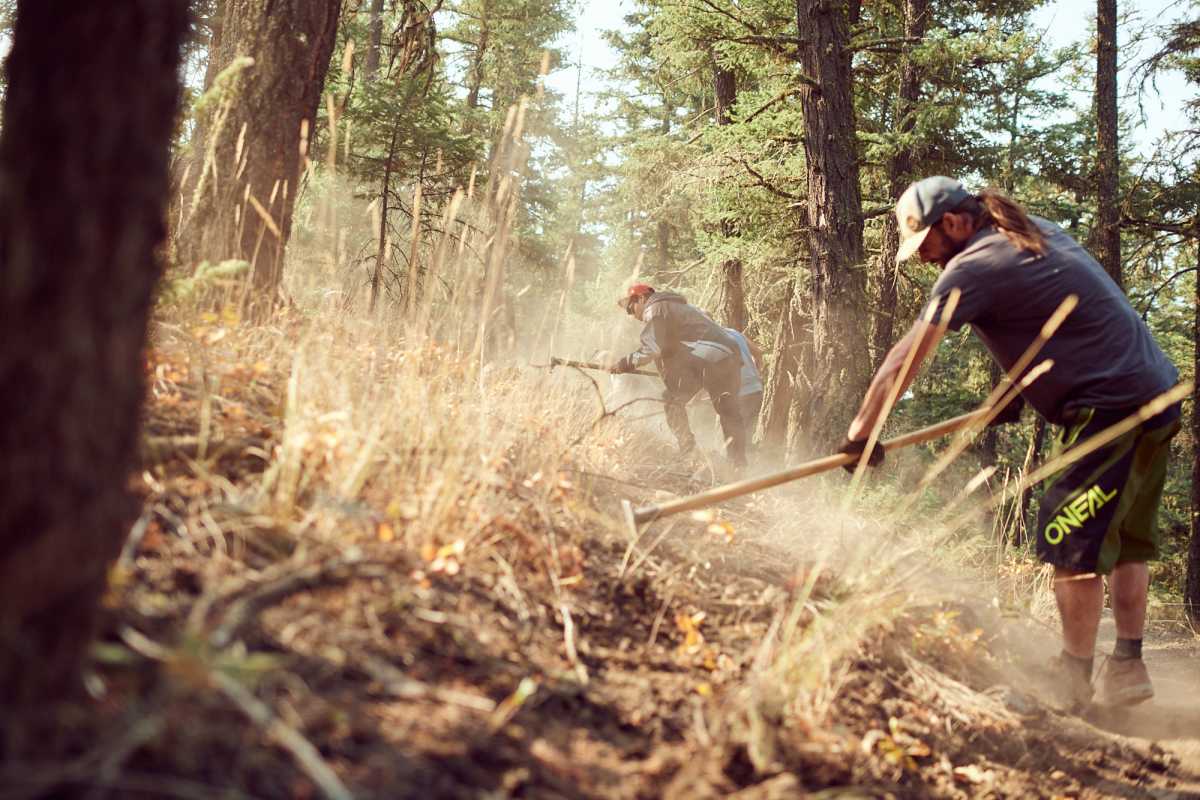
Over the past several years we have worked with dozens of Indigenous communities building world class mountain bike trails. We take great pride in the positive impacts the program has had on numerous Indigenous communities and youth across the province. However, this trip, and the experience of sharing the trails we love to build and ride with our new German friends, would help us understand the importance of trails in assisting Indigenous communities on pulling through this climate crisis and towards our own mental and physical well-being.
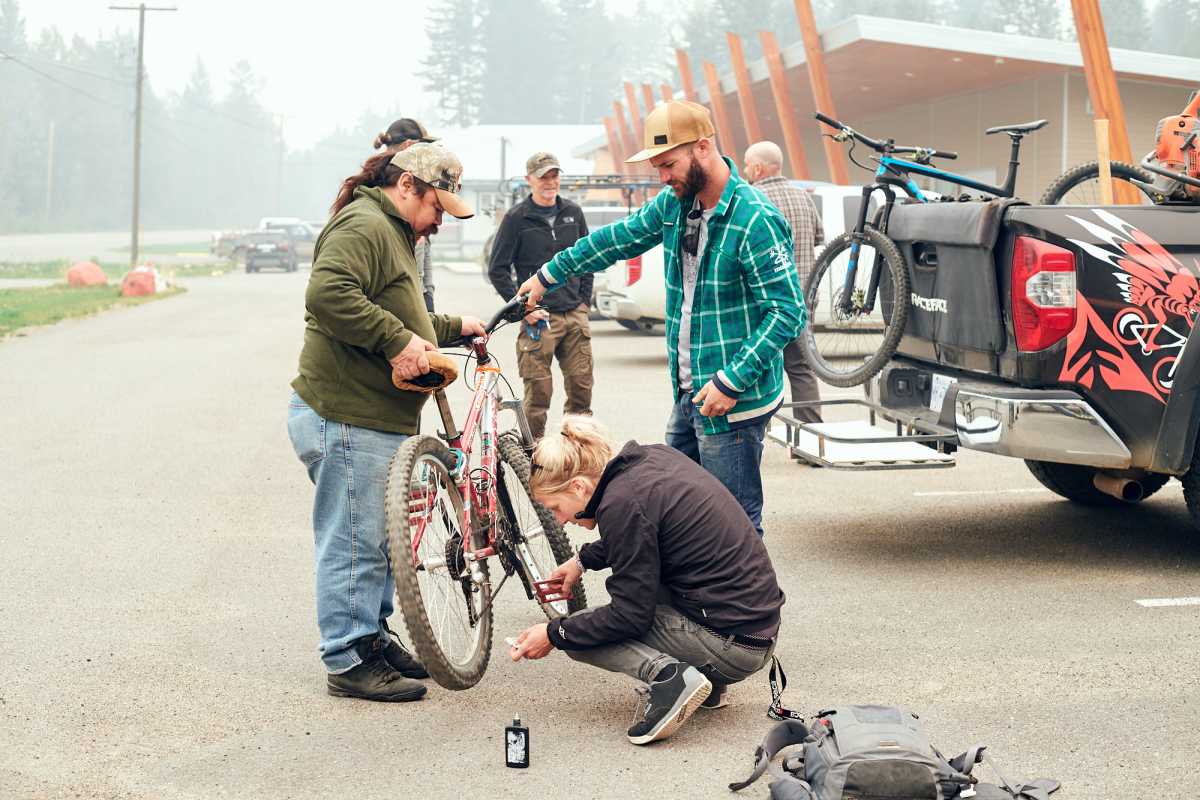
The smoke was already settling in thick and dreary when we arrived at the Xat’sull Heritage Village, a tourism destination owned and operated by the Xat’sull Nation on the banks of the Fraser just off Highway 97 a short ways north of the City of Williams Lake.
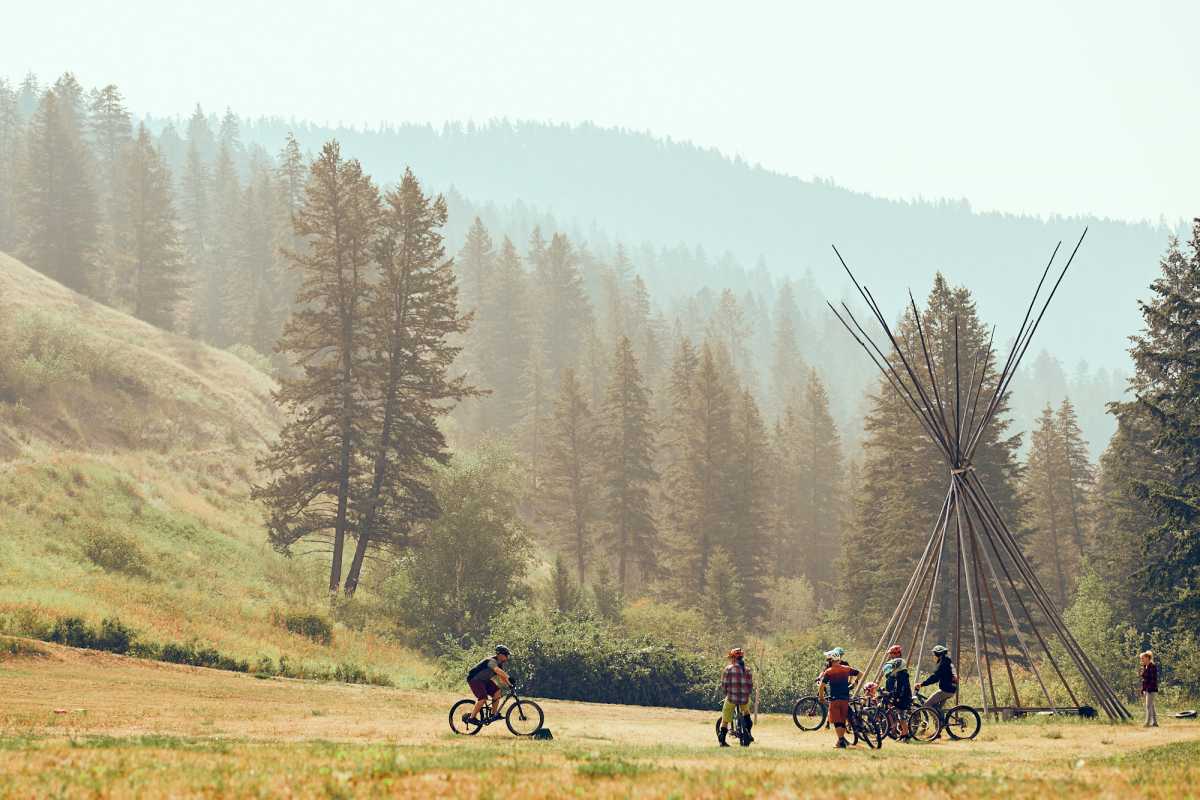
The site has also been the location for one of our most ambitious trail projects involving up to a dozen Indigenous youth trail builders who have constructed over 30km of trails in a three year period. I was feeling nervous and anxious as we set up our camp and discussed the schedule for the days to come. I was worried how our guests would feel about the smoky conditions and the dust and ash covered trails.
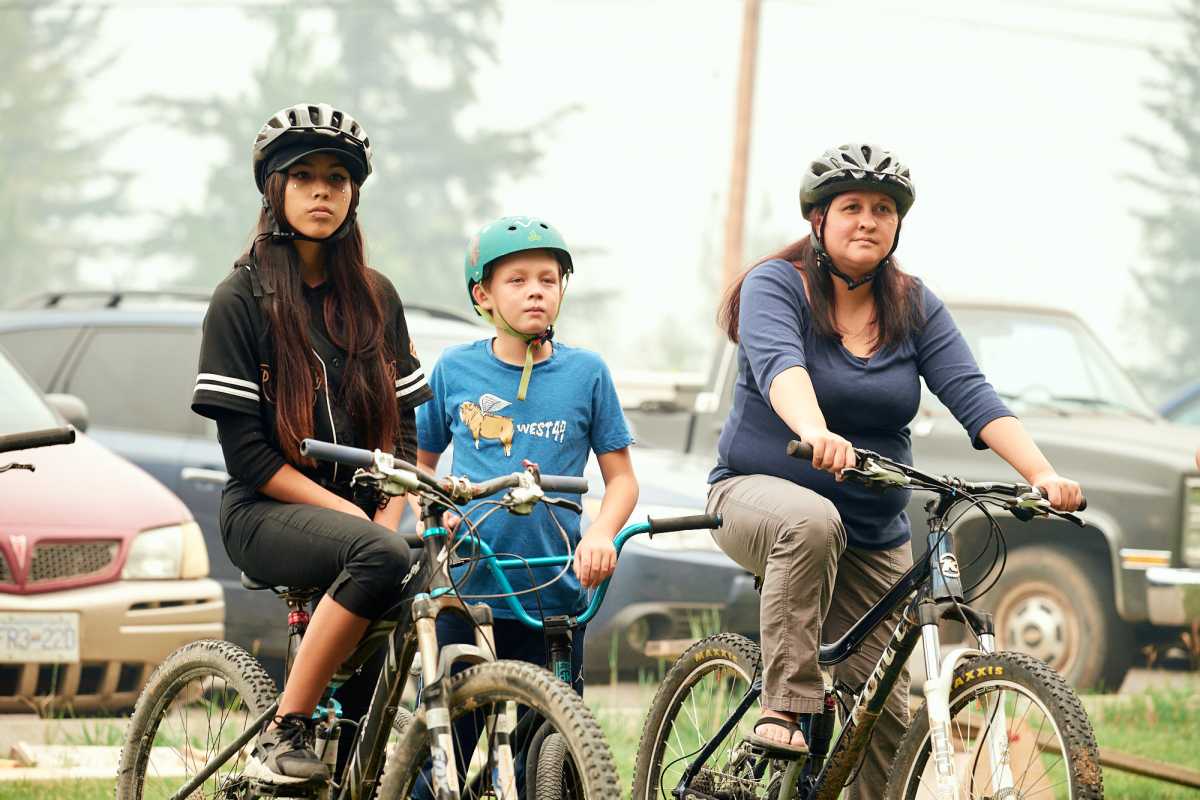
The next day we took a shuttle up the mountain for our first ride of the day. As expected the smoke rolled in thicker than ever, a smell of burnt wood and ash that tickled that backs of our throats. We started riding and quickly came into a section of burnt forest, burned and darkened trees standing against the slate grey sky. The German crew barely stopped and raced down into the trails that cut and curved down through the burn. They were loving it! Whooping and hollering.
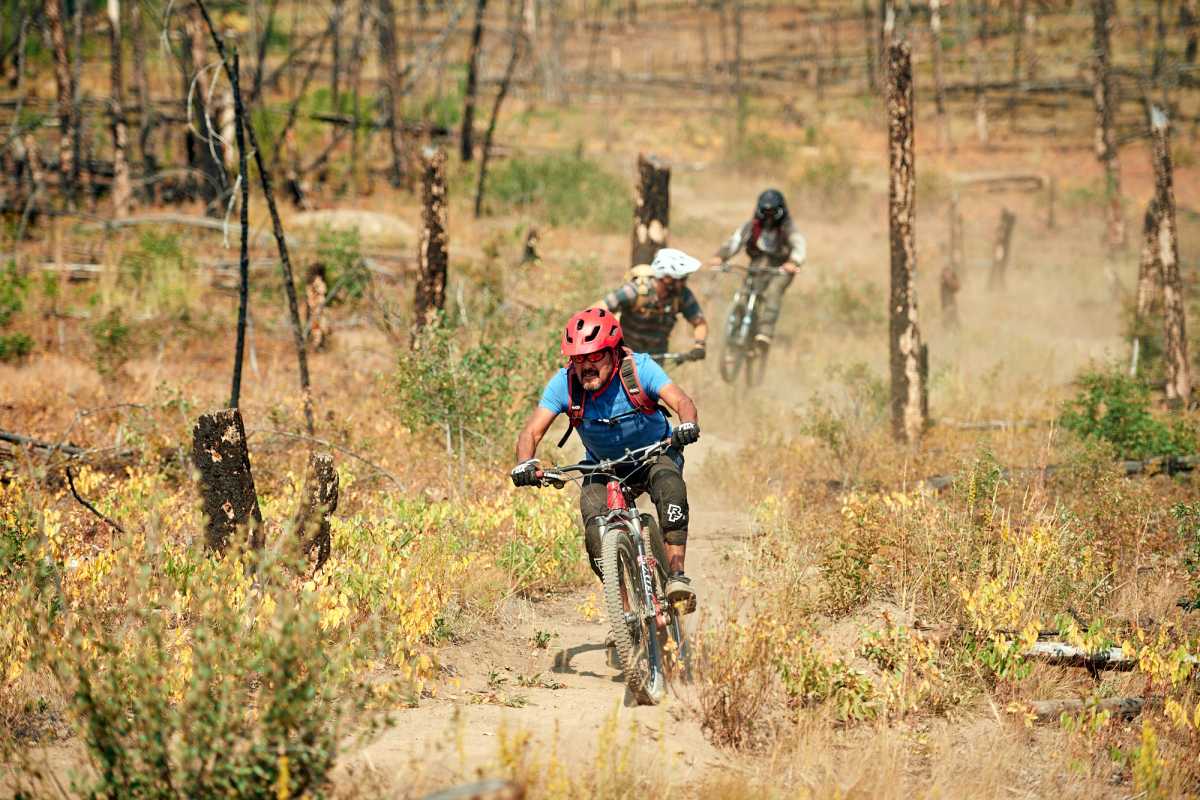
By sheer luck, many of the large wooden platforms, including the infamous separator, survived the fires and were there for our new friends to launch themselves off. They loved the open feel of the forest, the bright green colours of new growth, the thick patches of bright red and orange flowers fertilized by the ash from the previous year.
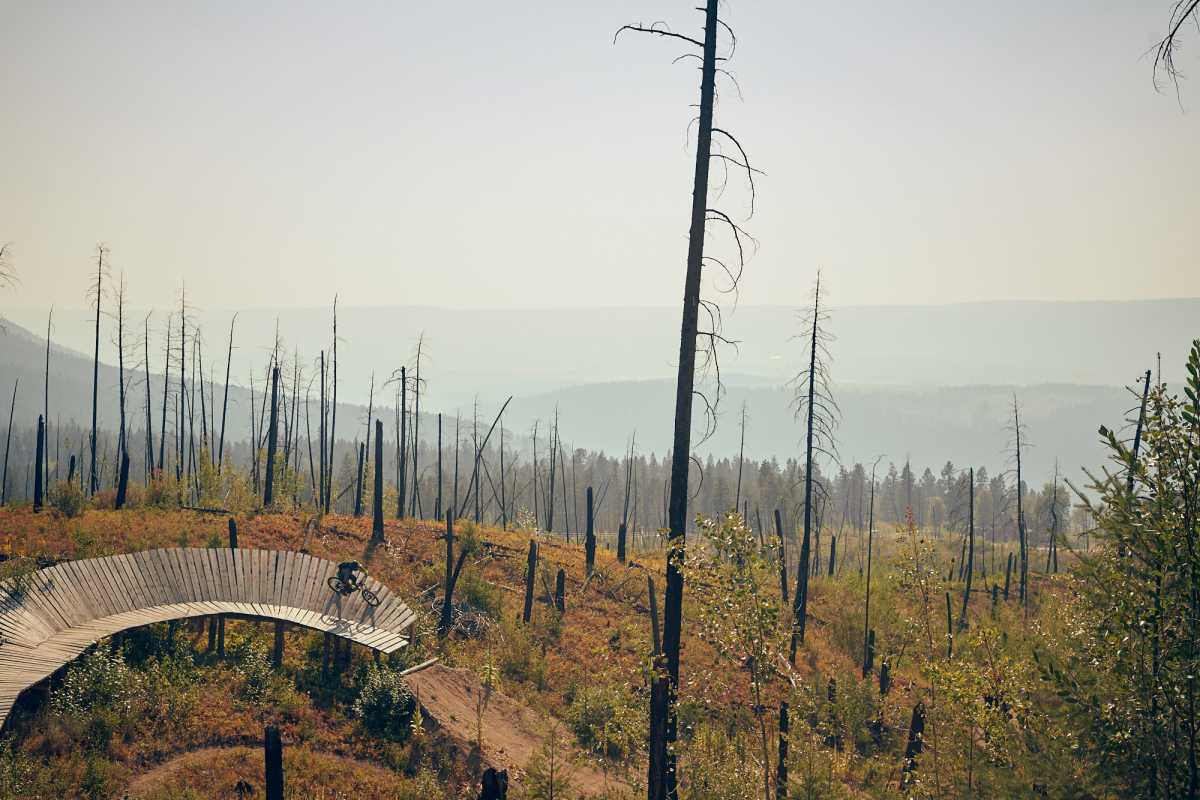
My own sense of anxiety and gloom from the fires had been replaced with a new sense of hope. The fire seasons have been hard, striking many communities and causing hardship. But the forest are already beginning to rebound and the trails are still here, ready to be shred. It took an outsiders perspective to remind me of this resilience and help me see that our communities, our trails, are still here, resilient, and ready for us.
